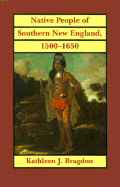
There’s always that word that you meant to look up and then one day you finally do, and it surprises you. Today it’s “Lacustrine.” I was rereading Native People of Southern New England, 1500-1650 by Professor Kathleen J Bragdon, a “comprehensive study of American Indians of southern New England from 1500 to 1650, (In which) Kathleen J. Bragdon discusses common features and significant differences among the Pawtucket, Massachusett, Nipmuck, Pocumtuck, Narragansett, Pokanoket, Niantic, Mohegan, and Pequot Indians.”
The sentence I read on page 35 was “By A.D. 1000, three distinct ecological regions had emerged in southern New England: maritime/estuarine; riverine; and uplands/lacustrine.”
The sentence I read on page 35 was “By A.D. 1000, three distinct ecological regions had emerged in southern New England: maritime/estuarine; riverine; and uplands/lacustrine.”
"Lacustrine plain"
From Wikipedia, the free encyclopedia
From Wikipedia, the free encyclopedia
"A Lacustrine plain is a plain that originally formed in a lacustrine environment, that is, as the bed of a lake, but from which the water has disappeared, by natural drainage, evaporation or other geophysical processes.
The soil of the plain left behind may constitute fertile and productive farm land, due to the previous accumulation of lacustrine sediments. In other cases it may be a wetland or a desert.”
From: http://en.wikipedia.org/wiki/Lacustrine_plain
On page 38, she writes, “…there is very little archeological evidence for village based settlement systems during the Late Woodland period…”
The soil of the plain left behind may constitute fertile and productive farm land, due to the previous accumulation of lacustrine sediments. In other cases it may be a wetland or a desert.”
From: http://en.wikipedia.org/wiki/Lacustrine_plain
On page 38, she writes, “…there is very little archeological evidence for village based settlement systems during the Late Woodland period…”
I’ll go back to a statement from my first post (http://wakinguponturtleisland.blogspot.com/2006/06/first-post.html):
“It's been many years since I woke up to the fact that I live in a special place on Turtle Island.Not that I was actually asleep for a long period of time, but rather I gradually became aware that remnants of ancient stonework was all around me, dismissed as Colonial construction, but (are) really part of a managed cultural landscape that may be hundreds or thousands of years old.”
And I’ll add a little bit using my new word for the day, “On a Lacustrine plain still known by it’s Indian name.”
“It's been many years since I woke up to the fact that I live in a special place on Turtle Island.Not that I was actually asleep for a long period of time, but rather I gradually became aware that remnants of ancient stonework was all around me, dismissed as Colonial construction, but (are) really part of a managed cultural landscape that may be hundreds or thousands of years old.”
And I’ll add a little bit using my new word for the day, “On a Lacustrine plain still known by it’s Indian name.”
No comments:
Post a Comment